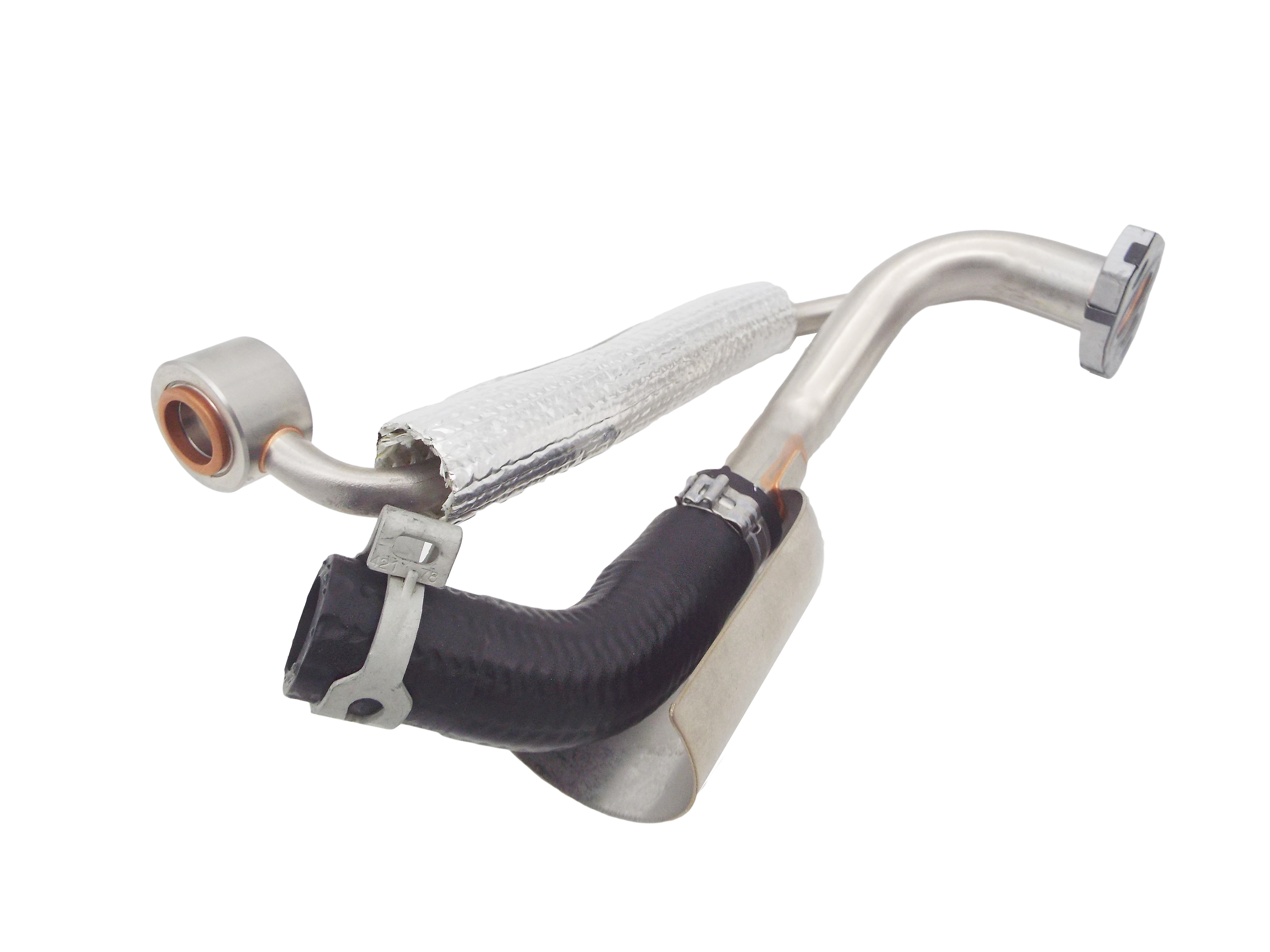With the trend for downsized engines that offer the performance of large, but with the fuel economy and emissions control of small, ensuring a regular flow of clean, quality oil to the turbocharger has become a must. Cue the oil feed pipe. Aptly named, and often undervalued, it has taken on an increasingly important role in recent years. Here, we explain why you should always replace the oil feed pipe when fitting a new or old turbocharger.
Much in the same way that an artery supplies blood to the heart, the oil feed pipe supplies engine oil to the turbo. Like blood to the human body, oil is vital to a turbocharger’s operation. As well as ensuring an essential film of lubrication between its many moving and highly stressed parts, it also transfers heat away from them. So, if its supply is restricted, even momentarily, because of a blockage in the pipe, or a leak, the consequences, although by no means comparable, could be disastrous. In either case it could mean complete failure. Even more so with today’s turbocharger technology.
More demands on the oil
Whilst oil has always been critical, with modern turbos spinning over 300,000 revs per minute – fast enough to whip the air through the intake at near-Mach 1 speeds – and enduring temperatures close on 1,000°C, the demands placed on it now are even greater. In these conditions, even the smallest particles of dirt, soot, fuel, water or other combustion residuals can contaminate the oil and build up in the pipe, restricting its supply and eventually starving the turbo of any lubricant. The result: wear, damage and ultimately complete failure, all of which, can happen in just a few seconds. Indeed, running a turbo without oil for only five seconds is said to be as harmful, if not more, as running an engine without oil for five minutes, making a consistent flow of clean oil to the turbo, the job of the oil feed pipe, an absolute must.
It’s all on the feed pipe
With a lot dependent on this one pipe, it is imperative that it is always clean, clear from obstruction and in good condition. Anything but, and there’s no guarantee that it will be able to supply clean oil, at the correct pressure. And we already know the consequences of this. Unfortunately, however, the oil feed pipe is also prone to issues.
When to replace the oil feed pipe?
For these reasons, and given the critical role that it plays, we would always recommend fitting a new feed pipe when replacing or refitting a turbo. Whilst it may add a few pounds to the repair bill, it is much more cost effective then having to fit a whole new turbo, saving your customers valuable time and money in the long run.
Why oil feed pipes fail?
The position of the feedpipe within the engine bay means they are particularly vulnerable to damage from heat and other issues such as:
- Material wear: over time, the continued high heat from the engine, can damage the pipe and break down the materials, especially the rubber.
- Carbon deposits: the excessive temperatures can also cause deposits of carbonised oil to form in the pipe’s inner walls, limiting the flow of oil to the turbocharger.
- Kinked lines: flexible oil lines can easily be twisted or bent during installation, causing a build-up of oil pressure, and leaks from both the turbine and compressor ends.
- Worn o-rings: many feed pipes use o-rings to seal the mounting locations. Over time, they can dry out and become brittle, leading to oil seeps and leaks.
- Damaged connectors: during removal and refit the connectors can be damaged, meaning that the entire system is no longer adequately sealed.
- Liquid sealant: although it should never be used it in the air or oil system, liquid sealant can easily become detached and block oil passages. It can also harden and break off into the turbo’s rotating assembly.
What to look out for in a faulty oil feed pipe?
Of course, issues can occur at any time, so it’s also a good idea to inspect the pipe on a regular basis too. Spotting potential problems early on, will help minimise the possibility of future damage to the turbo and even the engine:
- Cracked rubber: one of the most obvious signs that there’s an issue, is cracking to the rubber from prolonged exposure to the temperatures in the engine bay. If left unchecked this will cause much bigger issues.
- Bulging spots: another common sign is bulging spots in the hose, again due to the heat, as well as the constant flow of pressure through the pipe. Eventually the spots will tear, causing the oil to leak out.
- Oil leaks: noticeable puddles of oil underneath the car are also a sign that the pipe is damaged. Unfortunately, the greater the leak, the greater the chance of damage, so its important to get the pipe replaced as quickly as possible.
Best practice turbo service
For a best practice and cost-effective vehicle repair, we offer a wide range of OE and OE matching oil feed pipes. Complementing our existing remanufactured turbocharger programme, the line-up includes more than 200 part numbers, covering over 400 references for popular brands including BorgWarner, Garrett, Mitsubishi, IHI and Mahle. Learn more about our oil feed pipe range
Why replace the oil feed pipe in today’s turbochargers?
18th February 2021






